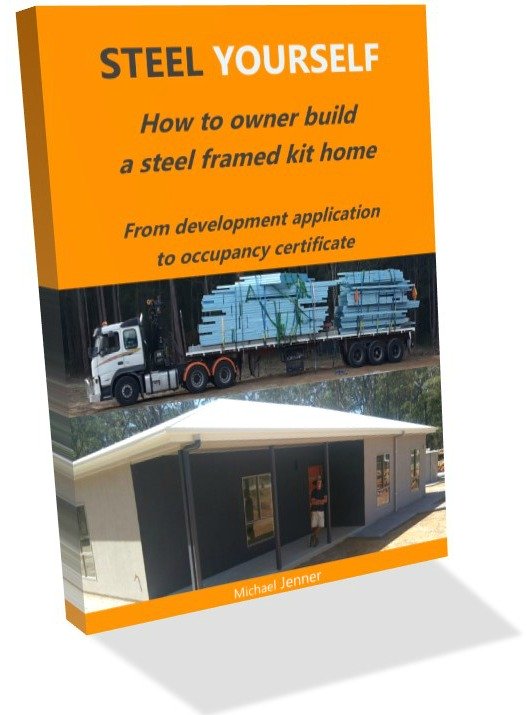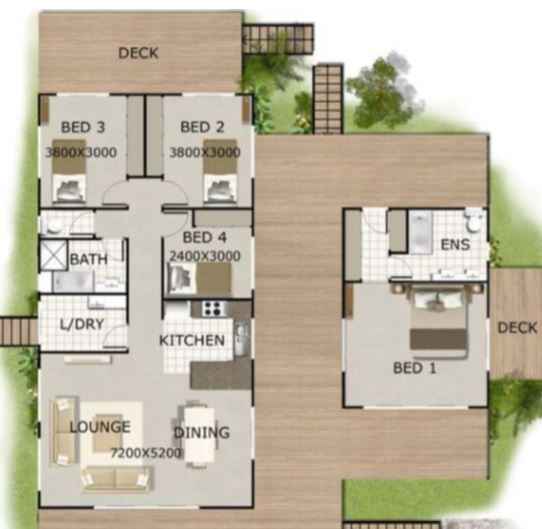Concrete Footing Design
for your kit home.
Understanding concrete footing design will boost your decision power when choosing house foundation types. Builders will argue the virtues of concrete slabs, but those that live on them aren't so convinced. Pier and beam foundations with a built in 'crawl space' are a favorite, but also have their drawbacks. Using 'cost' as a governor for selection of house footings appears to be extremely subjective. Among myriad variables influencing house foundation types are region, soil type and character, ground slope, water table, pests, vermin, average temperature, rainfall, house appearance and access.
Soil Testing
Concrete footing design is primarily influenced by a geo-technical survey (soil test). This tells you the health of the soil on your land, including plant nutrients such as nitrogen and phosphorus, cations (pronounced cat-irons) which relate to soil structure and physical character, and pH levels. From these results a structural engineer will determine the size of footings i.e. depth, width and shape, the density/strength of the poured concrete including minimum aggregate size, surface compacting and required reinforcing. Soil test results can greatly influence your decision on whether to lay a slab or get up on pier footings, but you will need more information to help make a decision on how to build a house foundation.
Concrete footing design considerations
From a number of forums and blogs I have researched, here are some pros and cons for pier and beam versus slab foundations
Pros for pier footings
° Can be a lot less expensive than slabs (if you do it yourself!)
° Less setup, less excavation, back-filling or retaining walls
° Fewer pest insurgencies and lower risk of flood damage
° Lower technical aptitude required and less labor
° Easy access to plumbing and drainage
° Easy access for future home alterations and additions
° Great underfloor ventilation in summer
° Wood floors have some give to cushion the feet
° A raised house has more 'curb' appeal
° Easier to build on sloped land
° Easier to install hardwood floors
Cons for pier footings
° Pier foundations can act independently resulting in a house that moves up on some beams, down in others, and laterally in others.
° Cold floors in winter (unless you install 'between joist' insulation)
° Under house area must be maintained (weeds, vermin, spiders!)
° Under-house water-pipes can freeze in cold areas
° High moisture content can increase mildew/mould and premature rotting
° May not be suitable for heavy furniture
° Pier floors commonly squeak
Pros for Slab foundations
° Faster and cheaper installation (if a slab builder does all the work)
° Good thermal mass
° Fireproof
° Insect resistant (unless they crack)
° Rigid and perfectly flat floor
° Easy to tile
° Easy access for the disabled
Cons for slab foundations
° You have to run water pipes through the ceiling
° Slabs can and will crack
° Very difficult to change the configuration of the house
° Termites are more prevalent in houses built on slabs
Mmmmm...You will notice that there are more pros and cons for the pier and beam foundation. It seems that more people argue over this design than slabs. Interesting.
So choosing concrete footing design can be daunting, and will require a lot of input from technicians and engineers. But if you are building a kit home, don't be afraid of a raised floor system. One of my kit homes was built on sandy/loamy/soupy soil. The engineer said 'dig big holes and it will be fine', so he specified 1200mm deep x 600mm wide chasms for my concrete footings. A slab would have been very expensive on my site due to the extra depth of the footing on the 'fill' side of the cut, extra thick slab piers and the amount of reinforcing steel required.
I also saved money by setting the piers myself (with the help of my awesome Dad and my darling wife), and it only took half a day to get the holes dug and half a day to set the steel piers in the concrete footings. No shoveling and barrowing concrete, as the truck rolled along between the footing holes. A slab requires a day to cut a pad, half a day to dig foundation trenches, a week to prepare boxing surrounds, another couple of days to get in-slab plumbing installed, then comes concreting day.
There are a further 6 pages of Kithomebasics information guides and graphics concerning concreting:
- Setting Out Plans helps you plot footings and slabs
- Termite Prevention covers the prevention and identification basics
- Concrete Footing Details is our guide to slab & pier construction
- DIY concrete outlines tools, equipment and steps to slab building
- Slab Formwork outlines formwork, rough in plumbing and reinforcing
- Pouring Concrete describes tips for pouring screeding and finishing
- Concrete Floor Construction shows plans and the construction sequence
- Concrete slab floor pictorial of whole process
Go back to kit home basics home page.




